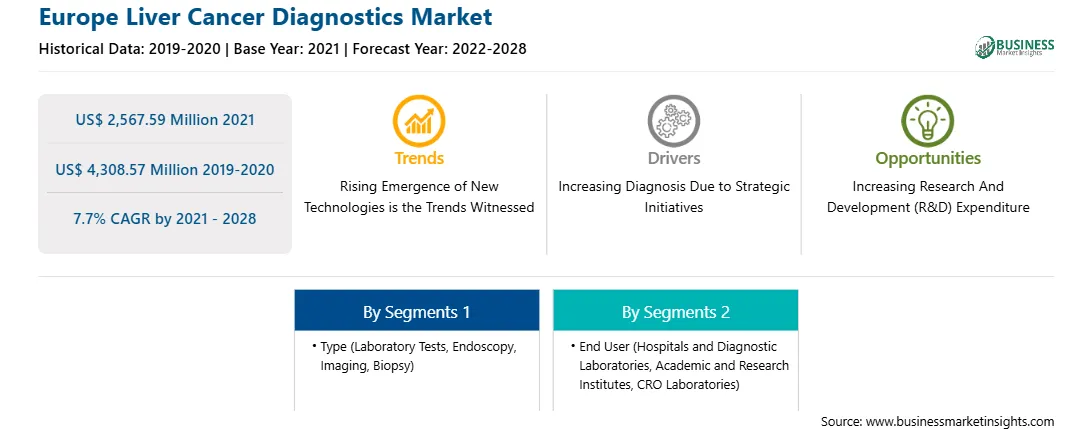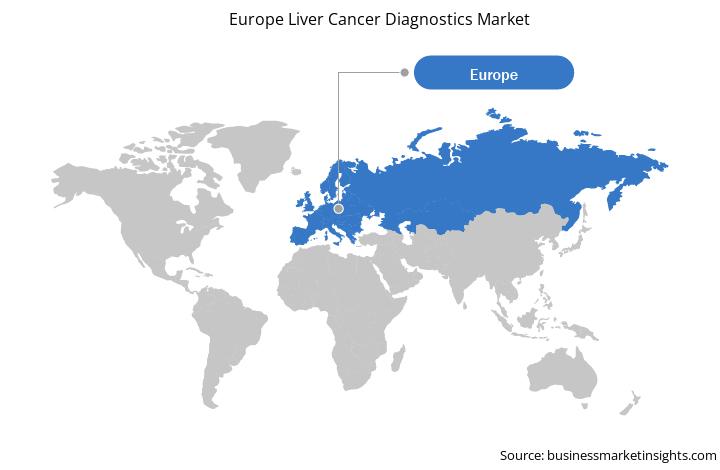Hepatocellular carcinoma is the most frequent type of liver cancer. It starts in the major type of liver cell (hepatocyte) and is the most common type of primary liver cancer. Hepatocellular carcinoma occurs most often in people with chronic liver diseases, such as cirrhosis caused by hepatitis B or hepatitis C infection. Other kinds of liver cancer are significantly less prevalent, such as intrahepatic cholangiocarcinoma and hepatoblastoma. Cancer that begins in another area of the body, such as the colon, lung, or breast, and then spreads to the liver is called metastatic cancer.
Moreover, metastatic colon cancer is a kind of cancer that starts in the colon and spreads to the liver. For instance, In Europe, HCC accounts for around 47,000 deaths per year. The incidence is comparatively low except in Southern Europe, where the age-standardized incidence rate in men is 9.8 per 100,000 compared with 3.8 in Northern Europe, 4.6 in central and Eastern Europe, and 7.2 in Western Europe. However, in the UK, the HCC-based mortality rate is expected to rise by 14% between 2006 and 2025, representing the largest increase in male cancer.
Furthermore, being overweight or having obesity is a risk factor for liver cancer and non-alcoholic fatty liver disease is a common condition in obese people. People with a subtype of non-alcoholic fatty liver disease, known as non-alcoholic steatohepatitis (NASH), might develop cirrhosis, which can cause liver cancer. Certain inherited metabolic diseases can lead to cirrhosis. Lifestyle and behaviors, such as smoking cigarettes and drinking alcohol, are the leading cause of cirrhosis, which is linked with an increased risk of liver cancer.
Type 2 diabetes has been linked with an increased risk of liver cancer, usually in patients with other risk factors such as heavy alcohol use or chronic viral hepatitis. This risk may also be increased as people with type 2 diabetes tend to be overweight or obese, which, in turn, can cause liver problems. According to IDF Diabetes Atlas Tenth edition 2021, approximately 537 million adults (20-79 years) are living with diabetes at present. The total number of people living with diabetes is projected to rise to 643 million by 2030 and 783 million by 2045. The factors mentioned above are increasing the risk of liver cancer, thereby driving the liver cancer diagnostics market.
With new features and technologies, vendors can attract new customers and expand their footprints in emerging markets. This factor is likely to drive the Europe Liver cancer diagnostics market at a substantial CAGR during the forecast period.
Strategic insights for the Europe Liver Cancer Diagnostics provides data-driven analysis of the industry landscape, including current trends, key players, and regional nuances. These insights offer actionable recommendations, enabling readers to differentiate themselves from competitors by identifying untapped segments or developing unique value propositions. Leveraging data analytics, these insights help industry players anticipate the market shifts, whether investors, manufacturers, or other stakeholders. A future-oriented perspective is essential, helping stakeholders anticipate market shifts and position themselves for long-term success in this dynamic region. Ultimately, effective strategic insights empower readers to make informed decisions that drive profitability and achieve their business objectives within the market.

| Report Attribute | Details |
|---|---|
| Market size in 2021 | US$ 2,567.59 Million |
| Market Size by 2028 | US$ 4,308.57 Million |
| Global CAGR (2021 - 2028) | 7.7% |
| Historical Data | 2019-2020 |
| Forecast period | 2022-2028 |
| Segments Covered |
By Type
|
| Regions and Countries Covered | Europe
|
| Market leaders and key company profiles |
The geographic scope of the Europe Liver Cancer Diagnostics refers to the specific areas in which a business operates and competes. Understanding local distinctions, such as diverse consumer preferences (e.g., demand for specific plug types or battery backup durations), varying economic conditions, and regulatory environments, is crucial for tailoring strategies to specific markets. Businesses can expand their reach by identifying underserved areas or adapting their offerings to meet local demands. A clear market focus allows for more effective resource allocation, targeted marketing campaigns, and better positioning against local competitors, ultimately driving growth in those targeted areas.

Europe Liver Cancer Diagnostics Market Segmentation
The Europe liver cancer diagnostics market is analyzed on the basis of type, end user, and country. Based on type, the market is segmented into laboratory tests, imaging, endoscopy, biopsy, and others. In 2021, the laboratory tests segment held the largest share of the market, and the imaging segment is expected to register a higher CAGR during the forecast period.
Based on laboratory tests, the market is segmented into blood tests and biomarkers. In 2021, the blood tests segment held a larger market share, and the same segment is expected to register the highest CAGR in the market during the forecast period.
Based on end user, the market is segmented into hospitals and diagnostic laboratories, academic and research institutes, and CRO laboratories. In 2021, the hospitals and diagnostic laboratories segment held the largest share of the market, and the same segment is expected to register a higher CAGR during the forecast period.
Based on country, the Europe liver cancer diagnostics market is segmented into Germany, France, the UK, Italy, Spain, and the Rest of Europe. In 2021, Germany held the largest market share, and the UK is expected to rise at the fastest CAGR during the forecast period.
Abbott; bioMerieux SA; F. HOFFMANN-LA ROCHE LTD.; Illumina, Inc.; Koninklijke Philips N.V.; QIAGEN; Siemens Healthineers AG; THERMO FISHER SCIENTIFIC INC.; GE Healthcare; and Perspectum are the leading companies in the Europe liver cancer diagnostics market.
The Europe Liver Cancer Diagnostics Market is valued at US$ 2,567.59 Million in 2021, it is projected to reach US$ 4,308.57 Million by 2028.
As per our report Europe Liver Cancer Diagnostics Market, the market size is valued at US$ 2,567.59 Million in 2021, projecting it to reach US$ 4,308.57 Million by 2028. This translates to a CAGR of approximately 7.7% during the forecast period.
The Europe Liver Cancer Diagnostics Market report typically cover these key segments-
The historic period, base year, and forecast period can vary slightly depending on the specific market research report. However, for the Europe Liver Cancer Diagnostics Market report:
The Europe Liver Cancer Diagnostics Market is populated by several key players, each contributing to its growth and innovation. Some of the major players include:
The Europe Liver Cancer Diagnostics Market report is valuable for diverse stakeholders, including:
Essentially, anyone involved in or considering involvement in the Europe Liver Cancer Diagnostics Market value chain can benefit from the information contained in a comprehensive market report.